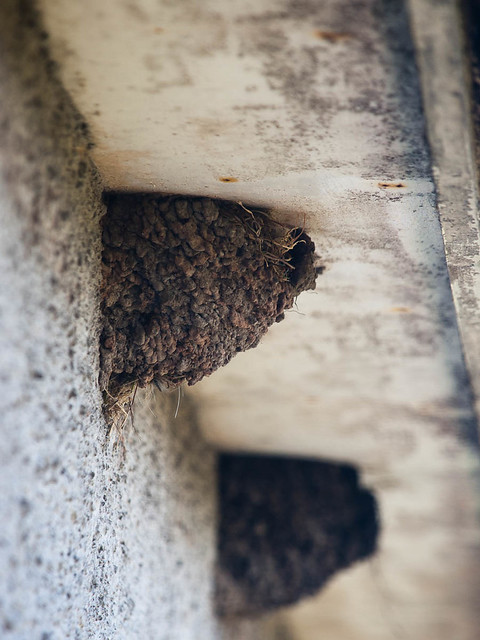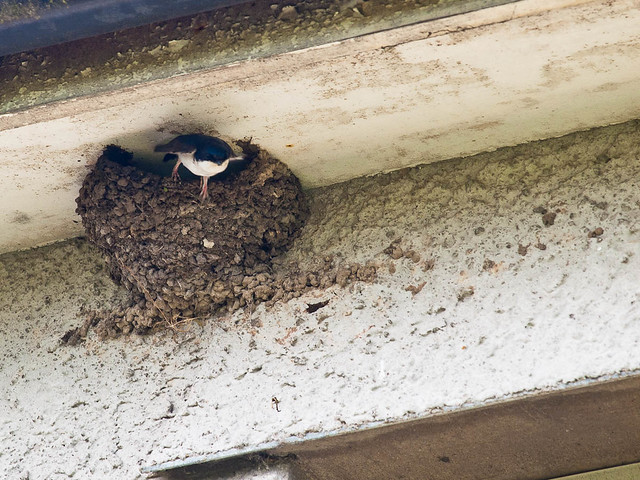There is an implicit assumption in Assignment 3 that buildings are man-made, which is fair enough in the context of the course, but misses a whole range of built structures which are not made by people. Even if we rule out grown structures such as shells and corals the ‘manufactured’ structures are often very ingenious (termite mounds), beautiful (spiders webs) or practical (birds nests) and all have been honed by evolution to be a very close fit to their intended function.
Now I’m not quite brave enough to submit a series of natural ‘built’ structures for Assignment 3, which seems to be one of the few places in this course, or any of the related courses, where we might submit natural history photography. However, it seems legit to add it to my blog so here we are.
House martins nests, in the unlikely event that you haven’t seen one, are shaped like a half-bowl, and built from gobbets of mud and saliva between the wall of a house and the eaves. They have a small entrance hole on the top edge and typically can house 2-3 chicks and a pair of adults (which must be quite cramped as the chicks reach full size). Most other birds find them difficult to enter – so nest stealing is not an issue, and most predators can’t get up the wall or over the edge of the roof so they are well protected from natural enemies and the weather. The rough surface makes it easy for the parents to cling to the outside of the nest while feeding the young.
In the context of this course I think the key features photographable from outside are:
- construction
- use as a feeding station for the young
- access arrangements and location
Hopefully these three shots capture those key points reasonably well. The first clearly shows the blobs of mud and the location (I do wonder if a little more context is needed for the eaves), the second shows the access arrangements and the manner in which the chicks are fed and the third specifically shows the access arrangement, with an adult leaving the nest.
Thoughts
The first thing I need to say is that this exercise (which I have tried on a number of occasions over a several summers) increase my respect for wildlife photographers immensely. The participants are living creatures not amenable to direction. I have taken (and deleted) dozens of failed photos attempting to catch the birds in the upward sweep towards the nest, both at high shutter speeds attempting to freeze the action, and at lower speeds for more ‘artistic blurs’. It is not a trivial exercise to capture more than fairly static shots of small fast moving creatures. Roll on next summer for another try.
The next thing that strikes me is that I do think it is a shame there are not more opportunities for this type of photography built into the course – even if I accept that I am sometimes too literal in interpreting the exercises and assignments. There is plenty of narrative potential in these pictures. I would have to accept that they are not particularly creative or original – but are they any less so than a lot of street photography for example?
And finally, these shots crystallise some thoughts I’ve been having about how I integrate my ‘personal’ photography with these courses – which must surely be the aim. There seems little point in paying all this money and expending all this effort if I end up with personal photography and degree photography. This, and future blogs, seem to be the showcase for this integration, while the ideas taken from the course, such as accent, and narrative and understanding the purpose of your photography all serve to make that photography more enjoyable and productive. I may even feel I’m getting somewhere – let’s hope the assessors agree.



1 comment:
Hi there - splendid shots of a bird I have not seem for a while.
As you say, getting good images of things that run away at the slightest shadow or noise is, to say the least, frustrating at times.
SM
Post a Comment